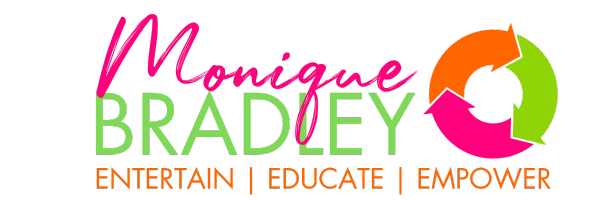10 Lessons We Can Learn About Being a TED Speaker

10 Lessons We Can Learn About Being a TED Speaker
Becoming a TED speaker is a prestigious milestone for many public speakers, offering a platform to share transformative ideas with a global audience. However, the journey to delivering a memorable TED talk involves more than just stepping onto a stage. Here are the top 10 lessons aspiring TED speakers can learn to master the art of public speaking and deliver impactful talks.
1. Find Your Unique Idea
The essence of a TED talk lies in its core idea. Chris Anderson, the curator of TED, emphasizes the importance of identifying a unique, compelling idea worth spreading. It’s not just about what you know but what can inspire others to think differently (Anderson, 2016). Take time to refine your idea, ensuring it has a clear, focused message.
2. Tell a Story
Humans are wired for stories. According to Brené Brown, who delivered one of the most-viewed TED talks on vulnerability, storytelling is a powerful way to connect with your audience on an emotional level (Brown, 2010). Craft your talk around a narrative that resonates, using personal anecdotes to illustrate your points.
3. Practice Relentlessly
Practice is key to delivering a smooth and confident TED talk. As noted by Simon Sinek, who gave the influential talk “Start with Why,” rehearsing repeatedly helps you internalize your message, making it easier to deliver naturally and without relying on notes (Sinek, 2009). Aim for a balance between preparation and spontaneity.
4. Keep It Concise
TED talks are typically 18 minutes or less, a format designed to hold the audience’s attention and encourage clarity. As Anderson (2016) suggests, brevity forces you to distill your message to its most essential elements, making every word count. Aim to convey your idea succinctly without sacrificing depth.
5. Use Visuals Wisely
Visual aids can enhance your talk by providing clarity and emphasis. David J. Phillips, in his TED talk on the power of visuals, highlights that well-chosen images and minimal text can significantly impact audience retention and understanding (Phillips, 2011). Avoid cluttered slides; instead, use visuals that complement and reinforce your narrative.
6. Be Authentic
Authenticity fosters trust and connection. Amy Cuddy, known for her talk on body language, underscores the importance of being genuine and true to yourself on stage (Cuddy, 2012). Audiences can detect insincerity, so embrace your unique personality and speak from the heart.
7. Engage with Your Audience
Engagement goes beyond eye contact. Julian Treasure, in his TED talk on effective communication, suggests using rhetorical questions, humor, and relatable examples to keep the audience engaged (Treasure, 2013). Interaction can also involve physical gestures and varying your vocal tone to maintain interest.
8. Handle Nerves Effectively
Even experienced speakers get nervous. Tim Urban, who spoke on procrastination, advises acknowledging your nerves and using them to fuel your performance rather than hinder it (Urban, 2016). Techniques like deep breathing, visualization, and positive affirmations can help manage anxiety.
9. Seek Feedback
Constructive feedback is invaluable for improvement. Before stepping onto the TED stage, seek input from trusted friends, mentors, or speaking coaches. Anderson (2016) recommends iterating on your talk based on feedback to refine your delivery and content.
10. Embrace Vulnerability
Embracing vulnerability can make your talk more impactful. Brené Brown’s talk on the power of vulnerability demonstrates that sharing your struggles and fears can create a powerful connection with the audience (Brown, 2010). Don’t be afraid to show your humanity; it’s often what makes your message relatable and memorable.
Regardless of if you want to become a successful TED speaker OR someone who simply wants to speak more clearly and with impact, the craft of delivering a speech involves more than just public speaking skills. It requires a combination of a unique idea, storytelling, relentless practice, brevity, effective visuals, authenticity, audience engagement, managing nerves, seeking feedback, and embracing vulnerability. By incorporating these lessons, you can enhance your ability to deliver compelling and impactful talks that resonate with audiences in your office or worldwide! And if you need help, reach out and let’s chat!
References
Anderson, C. (2016). TED Talks: The official TED guide to public speaking. Houghton Mifflin Harcourt.
Brown, B. (2010). The power of vulnerability. TED. https://www.ted.com/talks/brene_brown_the_power_of_vulnerability
Cuddy, A. (2012). Your body language may shape who you are. TED. https://www.ted.com/talks/amy_cuddy_your_body_language_shapes_who_you_are
Phillips, D. J. (2011). The magical science of storytelling. TEDxStockholm. https://www.ted.com/talks/david_jp_phillips_the_magical_science_of_storytelling
Sinek, S. (2009). How great leaders inspire action. TED. https://www.ted.com/talks/simon_sinek_how_great_leaders_inspire_action
Treasure, J. (2013). How to speak so that people want to listen. TED. https://www.ted.com/talks/julian_treasure_how_to_speak_so_that_people_want_to_listen
Urban, T. (2016). Inside the mind of a master procrastinator. TED. https://www.ted.com/talks/tim_urban_inside_the_mind_of_a_master_procrastinator

